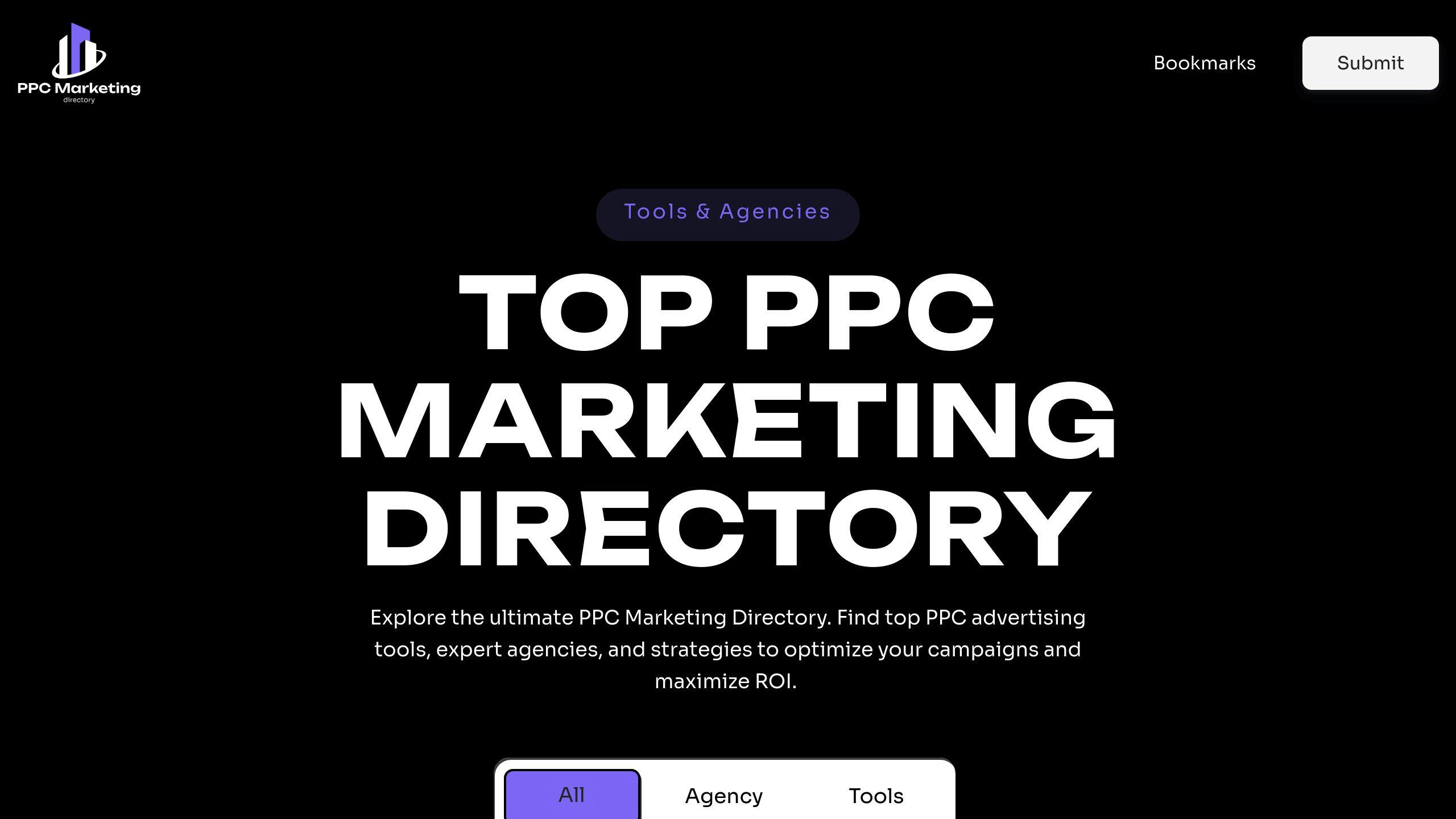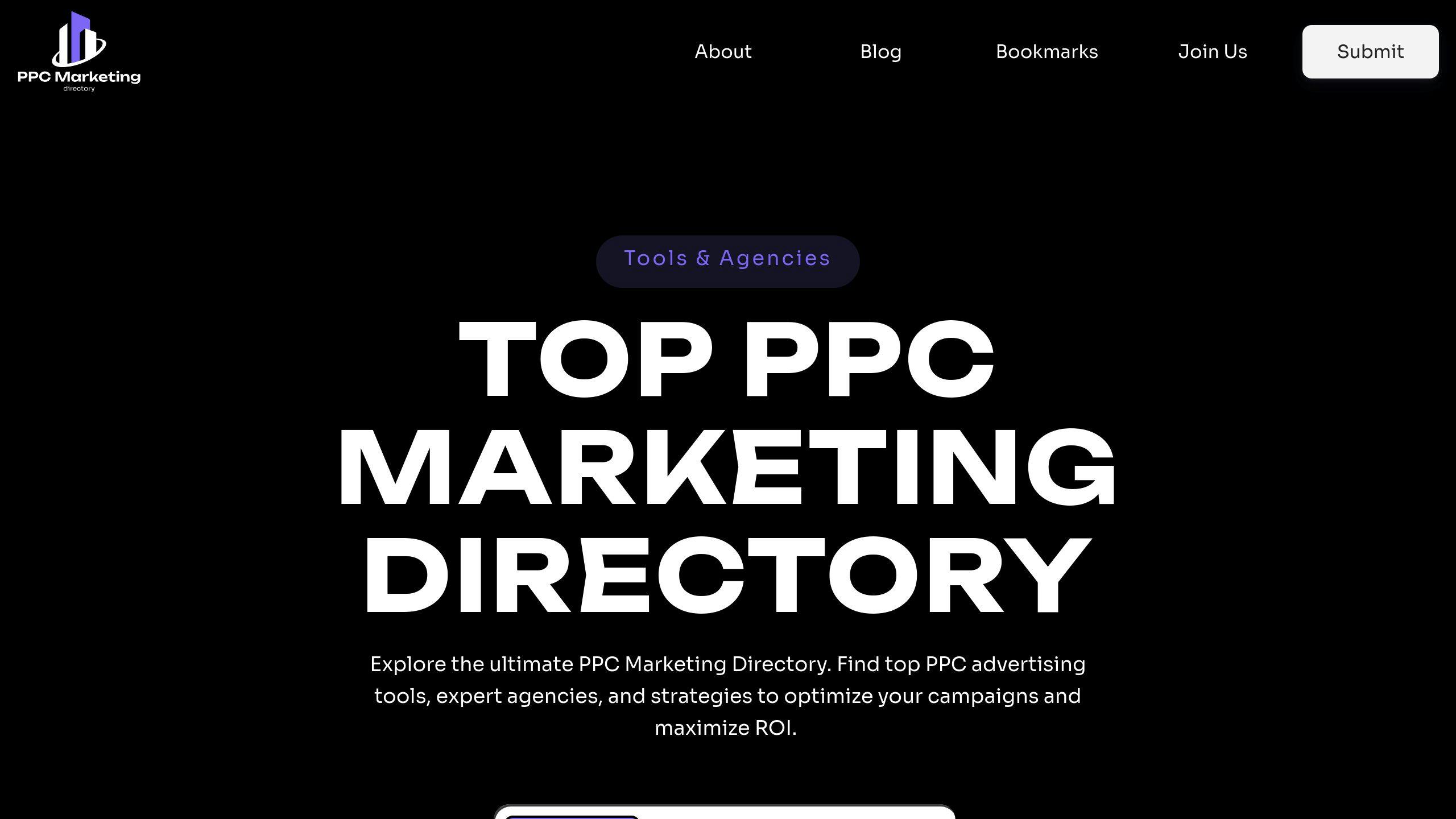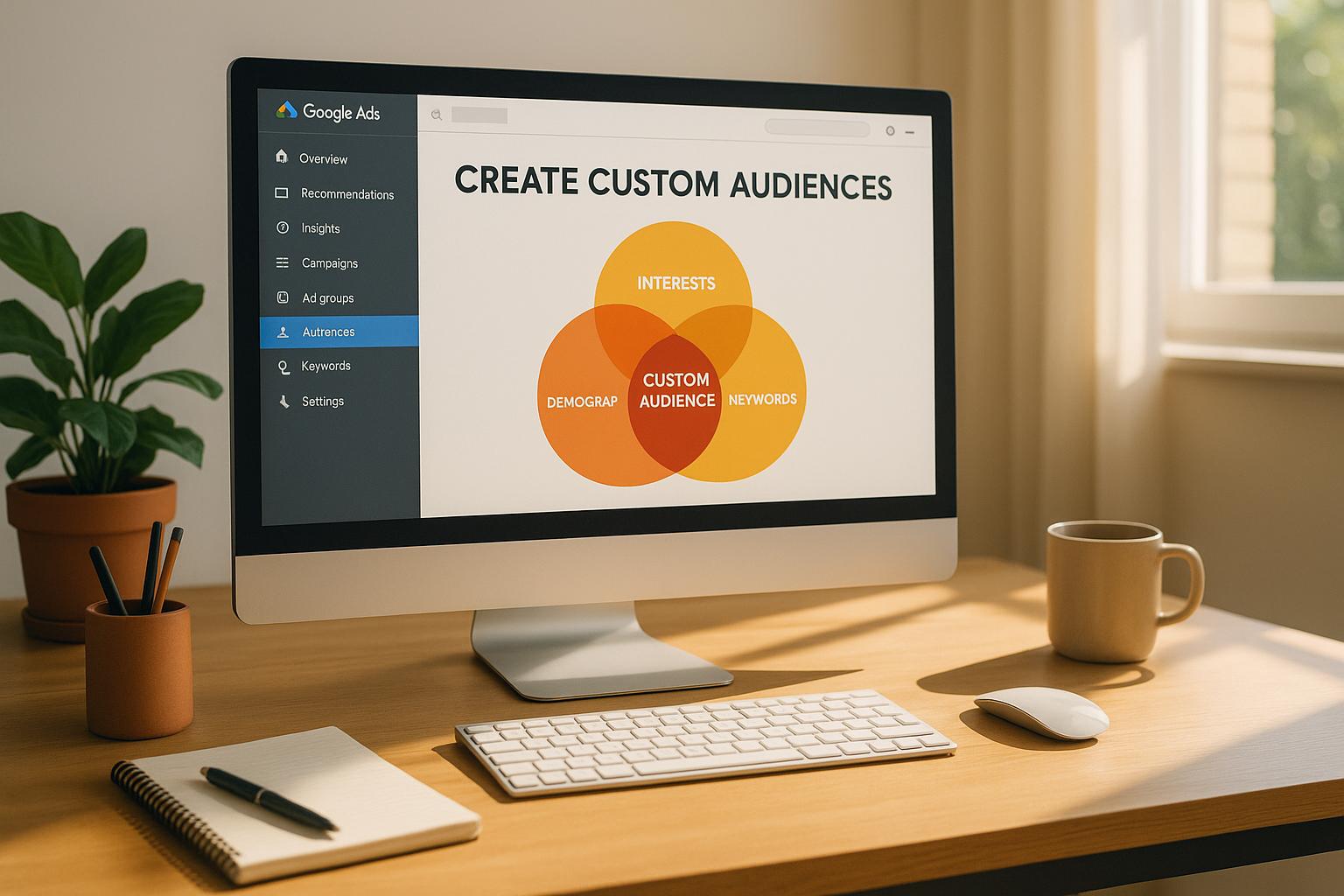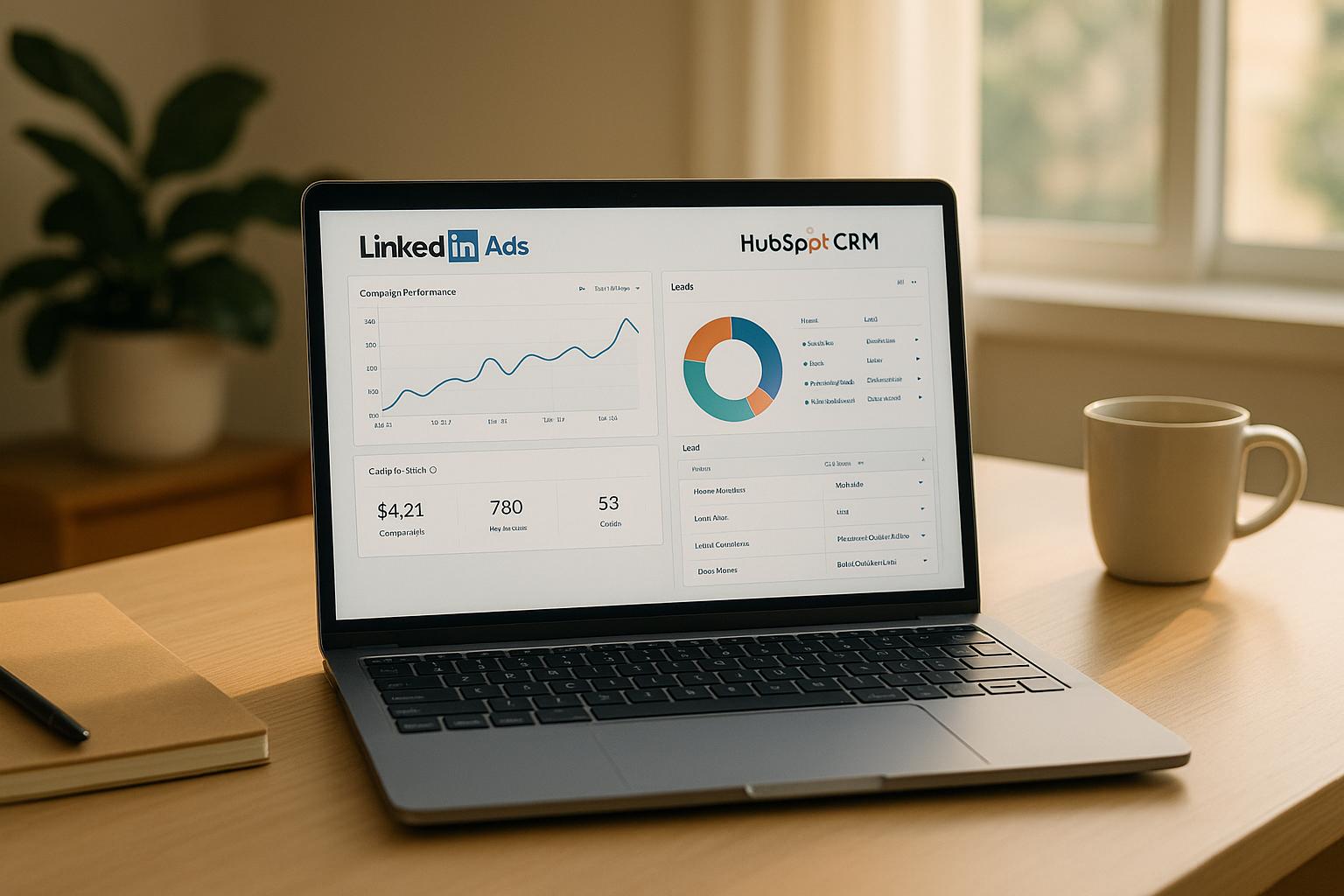Expected Click-Through Rate (CTR) is a key factor in Google Ads' Quality Score, directly influencing your ad rank and cost-per-click (CPC). Here's what you need to know:
- What is Expected CTR? It predicts how likely users are to click on your ad based on historical data, independent of position or extensions.
- Why it Matters: Higher Expected CTR improves Quality Score, leading to better ad placements and lower CPC.
- Components of Quality Score: Expected CTR, Ad Relevance, and Landing Page Experience all contribute, but Expected CTR holds significant weight.
- How to Improve Expected CTR:
- Write relevant ad copy with target keywords.
- Use ad extensions (e.g., sitelinks, callouts) to make ads more appealing.
- Implement Single Keyword Ad Groups (SKAGs) for precise targeting.
Quick Tip:
Regularly monitor your Expected CTR in Google Ads. If it’s “Below Average,” optimize keywords, ad copy, and landing pages to boost performance. A higher Expected CTR can significantly reduce costs and improve visibility.
Understanding Expected CTR and Quality Score
What is Expected CTR?
Expected CTR predicts how likely users are to click on your ads, based on historical data. Unlike actual CTR, which measures real clicks, this metric removes factors like ad position and extensions to provide a more neutral evaluation [1][3].
Google classifies Expected CTR into three categories:
| Status Level | Description |
|---|---|
| Above Average | Keywords performing well, contributing positively to Quality Score |
| Average | Keywords meeting expectations with no strong impact |
| Below Average | Keywords falling short and needing improvement |
Components of Quality Score
Quality Score is determined by three key factors: Expected CTR, Ad Relevance, and Landing Page Experience.
| Component | Description | Impact Weight |
|---|---|---|
| Expected CTR | Likelihood of clicks based on past performance | High |
| Ad Relevance | How well the ad matches user intent | Medium |
| Landing Page Experience | Relevance and quality of the destination page | High |
Early improvements in CTR carry more weight for Quality Score, so focusing on Expected CTR during the early stages of your campaign can make a big difference [1][2]. The connection between Expected CTR and Quality Score is logarithmic [2][3], meaning initial efforts to improve CTR have a stronger impact.
To boost Expected CTR, concentrate on creating relevant ad copy, aligning keywords effectively, and ensuring your landing pages meet user expectations [1][2]. While all three components matter, prioritizing Expected CTR can give your campaign a strong start.
The Impact of Expected CTR on Google Ads Campaigns

Effect on Ad Rank and CPC
Expected CTR is a key factor in your Quality Score, directly affecting both Ad Rank and cost-per-click (CPC). A higher Expected CTR boosts your Quality Score, which can lead to better ad positions at lower costs - a win-win for advertisers. This creates a cycle where improved performance leads to reduced expenses.
When your Expected CTR is rated as "Above Average", it helps secure a higher Ad Rank and lowers your CPC. On the other hand, a "Below Average" rating increases costs and limits your ad's ability to rank well.
Influence on Campaign Visibility
Expected CTR plays a big role in determining how often and where your ads appear in search results. A high Expected CTR signals to Google that your ad is relevant, making it more likely to earn top ad placements.
With a higher Expected CTR, your ads can achieve better visibility through improved placement and increased impression opportunities (the share of total available impressions your ad receives). This can also give you an edge over competitors.
"A higher Quality Score can lead to a higher Ad Rank, resulting in better ad placement. This increased visibility can drive more traffic and potentially more conversions." [4]
To maintain strong visibility, it's crucial to regularly check your Expected CTR status in the Google Ads interface. If it shows "Below Average", that's your cue to take immediate action to optimize performance and avoid higher costs or reduced visibility.
Given Expected CTR's importance in campaign success, prioritizing strategies to improve it should be a top focus.
Ways to Improve Expected CTR and Quality Score
Improving Ad Copy Relevance
Make your ad copy resonate with what users are searching for by naturally including target keywords and addressing their needs. For instance, if someone searches for "buy running shoes", your ad should focus on purchase intent and highlight specific perks. Instead of saying "Quality Running Shoes", go with something like "Shop Running Shoes - Free Shipping."
By tailoring your ad copy to match user intent, you can boost your Expected CTR and gain an edge in Google's ranking system.
Effective Use of Ad Extensions
Well-placed ad extensions can make your ads more appealing and directly impact your Expected CTR and Quality Score. They provide additional information and options, helping your ad stand out.
Here’s how to make the most of different ad extension types:
- Sitelink Extensions: Include 4-6 deep links with unique descriptions to potentially increase CTR by up to 15%.
- Callout Extensions: Use phrases like "24/7 Support" or "Free Returns" to highlight key benefits.
- Structured Snippets: Display features or categories, adding more detail to your ad.
Ad extensions not only improve your ad's visibility but also complement strategies like SKAGs for precise targeting.
Using Single Keyword Ad Groups (SKAGs)
Single Keyword Ad Groups (SKAGs) help you achieve laser-focused targeting by aligning keywords and ad copy perfectly. This approach ensures your ads are highly relevant to user searches, improving both Expected CTR and Quality Score.
To get started with SKAGs:
- Focus each ad group on a single keyword and its close variations.
- Write ad copy that directly incorporates the keyword to boost relevance.
- Regularly analyze performance data to fine-tune and optimize your SKAGs over time.
This method allows for tighter control and better alignment between your ads and search queries.
Tracking and Analyzing Expected CTR Performance
Checking Expected CTR in Google Ads
To monitor your Expected CTR in Google Ads, head to the Keywords section on the left-hand panel and choose Search keywords. Then, customize your view by clicking on columns, selecting Quality Score, and enabling the Exp. CTR option.
Google Ads categorizes Expected CTR ratings into three levels:
- Above average: Indicates strong keyword performance.
- Average: Shows room for improvement.
- Below average: Signals the need for immediate adjustments.
Tools for Performance Analysis
The Google Ads Performance Grader can help you evaluate Expected CTR and Quality Score by analyzing key metrics. Here's what it covers:
| Metric | What It Measures | Why It Matters |
|---|---|---|
| Historical Performance | Effectiveness of keywords and ads | Helps refine your optimization strategy |
| Competitive Position | How you compare to competitors | Reveals opportunities for growth |
| Budget Efficiency | How resources are allocated | Highlights areas needing adjustments |
For effective tracking, review your Expected CTR weekly, compare it to industry benchmarks, and monitor Quality Score trends to spot areas for improvement. This approach ensures you can measure the impact of strategies like SKAGs or ad extensions on your Expected CTR.
Regular analysis with these tools allows you to:
- Pinpoint low-performing keywords quickly.
- Make data-driven adjustments to campaigns.
- Prioritize optimizations based on performance insights.
After evaluating your Expected CTR, consider using additional tools and resources to refine your campaign strategies further.
sbb-itb-89b8f36
How To Improve Google Ads Quality Score for Cheaper Clicks
Top PPC Marketing Directory: A Resource for PPC Optimization

After pinpointing areas where your Expected CTR could improve, the next step is to find the right tools to make those changes happen. The Top PPC Marketing Directory is packed with resources specifically geared toward helping you optimize your PPC campaigns.
What the Top PPC Marketing Directory Offers

This directory includes tools for everything from ad copy tweaks to campaign management. It also covers keyword research and performance tracking, giving you the resources to make data-backed decisions while staying aligned with Quality Score goals.
How It Can Boost Your Expected CTR
The directory is designed to help you tackle Expected CTR improvements with tools that focus on:
- Tracking CTR changes as you optimize
- Comparing your performance to industry benchmarks
- Aligning landing pages with ad content
- Running A/B tests to find the most effective ad variations
With these tools, you’ll have what you need to make meaningful, measurable improvements to your PPC campaigns.
Conclusion: Boosting Campaign Performance with Expected CTR
Expected CTR plays a crucial role in Google Ads performance. It directly affects Quality Score, which in turn impacts ad rank and costs. For instance, research highlights that achieving a Quality Score of 8 can lead to a 37% lower CPC compared to a score of 5 [1].
To improve Expected CTR, focus on strategies like optimizing ad relevance, using ad extensions, and refining keyword targeting. These methods work together to create ads that resonate better with your audience and improve your Quality Score.
Tracking performance regularly is just as important. Google Ads allows you to monitor Expected CTR, helping you pinpoint areas that need attention. Once you identify gaps, the right tools can make implementing changes much easier.
Tools featured in the Top PPC Marketing Directory can simplify tasks like A/B testing and keyword adjustments. These resources are designed to help you put the strategies from this guide into action, leading to better Expected CTR.
Improving Expected CTR isn’t a one-time task - it’s a continuous effort. By making it a key part of your broader Quality Score strategy, you can enhance both visibility and ROI over time. This approach ensures your Google Ads campaigns remain effective and cost-efficient in the long run.
FAQs
How do I improve expected CTR in Google Ads?
Boosting your expected CTR involves using a mix of strategies that work together effectively. While SKAGs (Single Keyword Ad Groups) help match search queries with ads for better relevance, you’ll want to go beyond that with these tactics:
- Write better ad copy: Focus on headlines and descriptions that align with search intent and grab attention.
- Use ad extensions wisely: Add extensions like sitelinks or callouts to improve visibility and interaction.
- Keep an eye on performance: Regularly check metrics like Quality Score to spot areas for improvement.
- Refine your keywords: Adjust match types and add negative keywords to filter out irrelevant traffic.
"Your click-through rate today directly impacts how Google Ads predicts your ads will perform in the future." - WordStream [3]
Does CTR help in improving the Quality Score?
Absolutely. CTR plays a key role in improving your Quality Score by showing Google how relevant your ad is to users. Here’s how the connection works:
- Short-term impact: A higher CTR signals that your ad resonates with users, which improves its ranking.
- Long-term advantage: Consistently good CTR helps maintain and strengthen your Quality Score over time.
When paired with the strategies mentioned earlier, focusing on CTR can give your campaigns a solid foundation for long-term success. Keep monitoring and tweaking your efforts to ensure steady improvements in both CTR and Quality Score.


